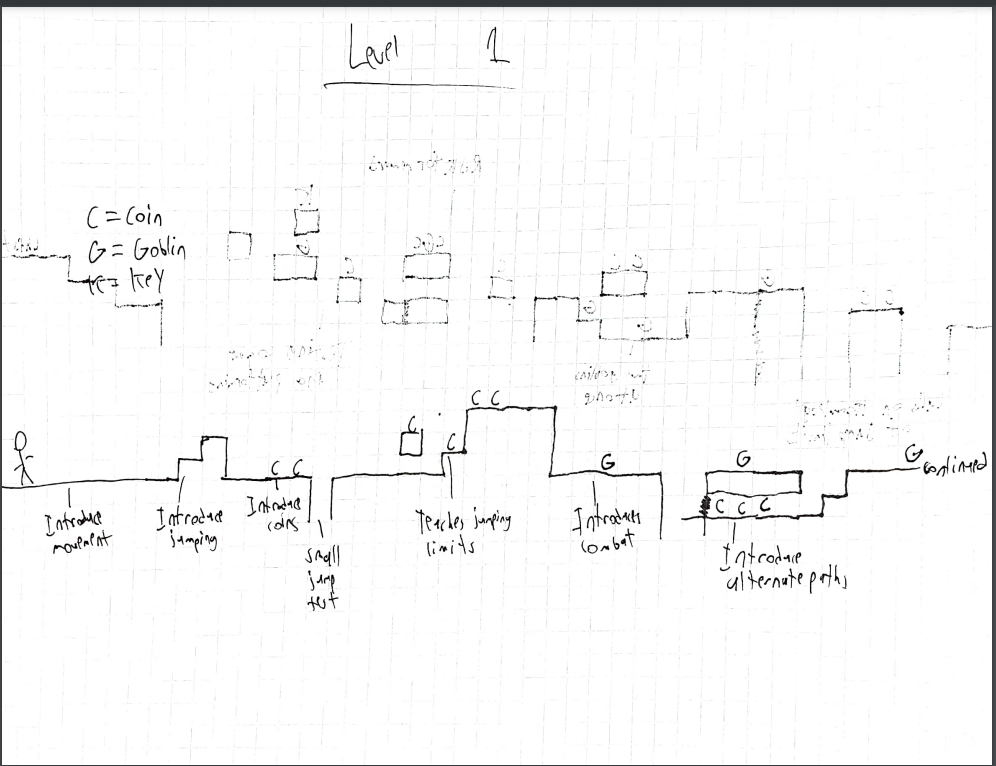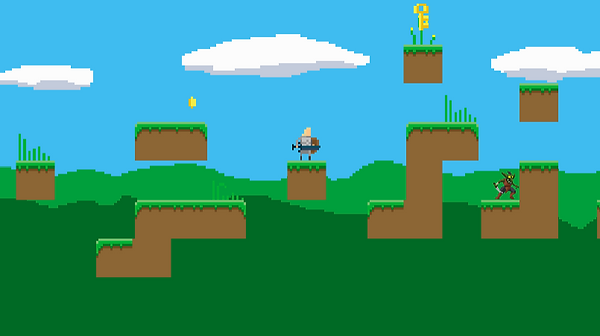
CHEST QUEST
Project Type
Full Game
Skills/Tools
- Unity
- C# Scripting
- System Design
- Level Design
Duration
May 2022 - August 2022
Project Overview
Chest Quest is a simple 2D platformer I made in Unity. The Player traverses three short levels, each with a different feel, and a boss at the end! The levels include a series of platforming challenges that get progressively more difficult and complex.
I worked on this project by myself, with the intent of expanding my Unity implementation skills before starting my DigiPen career. The game is playable from start to finish in about 15 minutes.
Project Details
Inspiration
I started Chest Quest as a project with the intention of expanding my technical Unity implementation skills, as well as developing on my design process and thinking in the safe, established space of 2D Platformer design. I learned a lot from this project, and this write-up serves to give insight into my design process.
Brainstorming
Designing within constraints was (as it always is) the name of the game for this project. My Unity skills were not as developed when I began, so the core tenet of this game’s design was to make it as fun and enjoyable as possible with the simplest building blocks of 2D platformers that I was able to implement myself.
Level Draw-Ups
Once I had my basic building blocks implemented, I started designing my levels on graph paper, so as to save time. Not only did I draw out the shape of the levels and the placements of enemies, coins, and keys, but I also wrote little design notes to explain the thoughts behind each design decision. Doing this every step of the way helped me keep the engagement arc of the overall player experience in mind as I worked on the more granular placement of blocks and enemies, it helped me with tutorialization, and it allowed me to more efficiently track my expansions and evolutions. Once I’d revised the drawings a bit, I took them to the editor.

Editor Implementation
Taking my level designs to the editor made some of the flaws in my designs immediately apparent. Some jumps were harder than intended, some were easier, and the physics and collision would cause the player to get caught on corners for certain jumps.
I play-tested the levels myself extensively, taking note of which jumps I would fail often and which were easy, and taking note of that difficulty over time. I wanted the end of each level to be harder than the beginning, and for the levels to become more complicated and difficult as the player progressed.

Testing and Iteration
As soon as I could, I got Chest Quest in front of others. I was deliberate in my choice of testers; a combination of classmates and professors with more insight into building good engagement curves through level design, and players with little experience with platformers or games in general (my target audience).
Both of these groups gave me useful feedback that inspired changes in the game’s design. Members of my target audience made it clear when controls and objectives were not made clear, and when difficulty increased too rapidly, and my professors and classmates offered new ideas to consider implementing to expand on the design.
The biggest bit of feedback I got was that some of the difficulty spikes were too steep. To combat this, I changed some jumps or combat encounters to be numerically less challenging (fewer enemies, shorter jumps, etc.), and I changed others to be more easily retried (adding in platforms to allow a player to retry a jump without dying).
Conclusion
After a few times through the loop of playtesting and tweaking level layout, I made the call that Chest Quest has fulfilled the goals I set for it. It is now a 5-10 minute 2D Platformer experience that demonstrates my ability to design a level with tutorialization, difficulty, and engagement curves in mind.